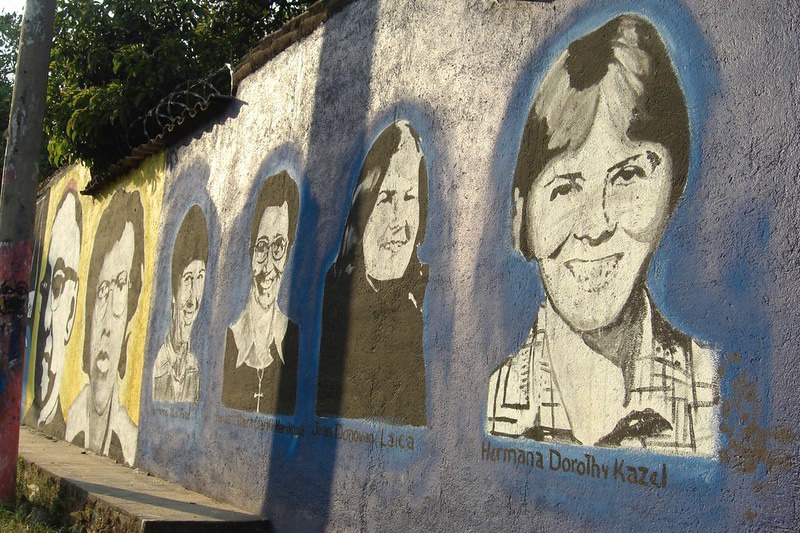Andrew Hamilton 03 December 2020
. . .

Ita Ford and Maura Clarke were Maryknoll Sisters. On December 2, 1980 they returned to El Salvador from a Maryknoll gathering in Nicaragua. At the airport they were picked up by Ursuline Sister Dorothy Kazel and Lay missionary Jean Donovan. The four were stopped by Salvadorean military acting under orders, were taken to an isolated place, beaten, raped, murdered and left lying there.
At the gathering Ita Ford had read an excerpt from a sermon preached by Oscar Romero shortly before his death earlier in the year. It concluded: ‘Christ invites us not to fear persecution because, believe me, brothers and sisters, he who is committed to the poor must run the same fate as the poor, and in El Salvador we know what the fate of the poor signifies: to disappear, be tortured, to be captive — and to be found dead.’
My personal interest in Ita Forde and Maura Clarke began 12 years later through a brief association with a Catholic community named after them. In the aftermath of the killing of the six Jesuits, their housekeeper and her daughter, I spent six months in El Salvador visiting communities whose members had fled from military violence into surrounding nations and had returned to settle on deserted lands. Jesuit Refugee Services supported some of these communities. I also wanted to read Latin American theology in its own context. During the week I worked in the theological library, still scarred by the bullets fired during the murder of the Jesuits in the house, and at weekends visited different communities.
The community in which I spent most time was the Comunidad Ita Maura, named after the two Maryknoll Sisters. The people had fled some years before from villages in the Cabanas region. The counter insurgency policy of the Salvadorean army was to drain the lake so that the insurgent fish could not live there. They destroyed villages, killing their leaders (especially the catechists), and terrorised the people. The people who later settled at Ita Maura were among those who fled across the Rio Lempa border with Honduras and were fired on from both sides of the river. In the Honduras camps they had reflected on the Gospel and its meaning for them, and from frightened individuals had become a strong community. Against the wishes of the Government and accompanied by young volunteers from the United States, they re-entered El Salvador and settled on deserted land where they tried to be self-sufficient. They were regarded as intruders by the people in the neighbouring towns but were supported by sister communities in the United States.
More:
https://www.eurekastreet.com.au/article/reflecting-on-the-inalienable-humanity-of-martyrs
 = new reply since forum marked as read
= new reply since forum marked as read
